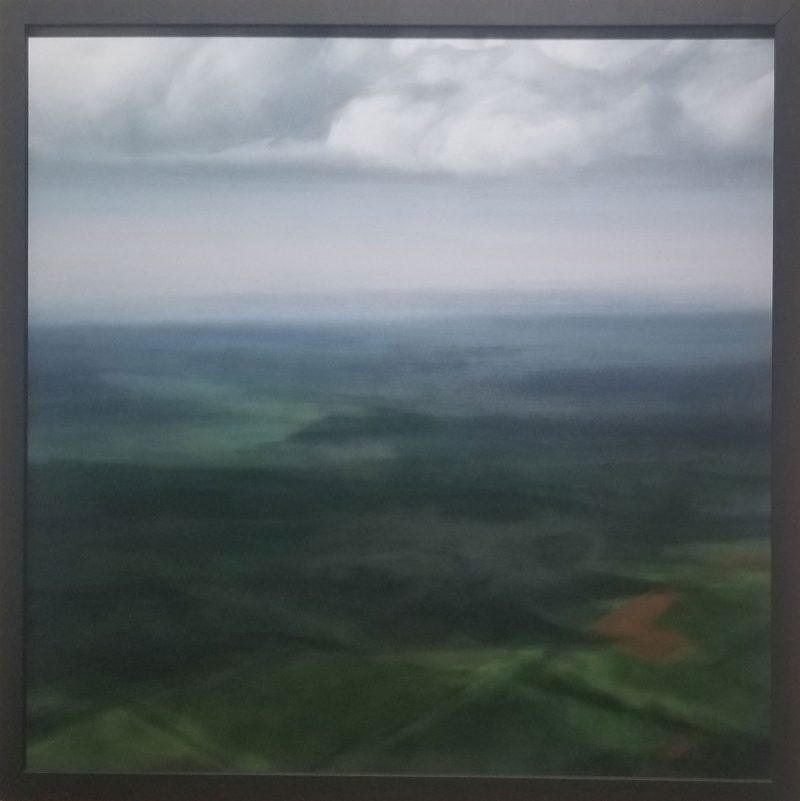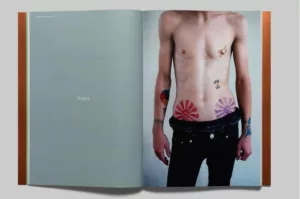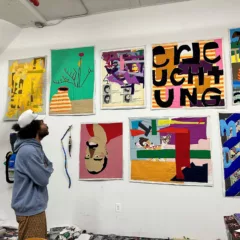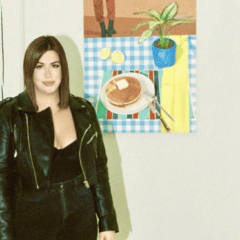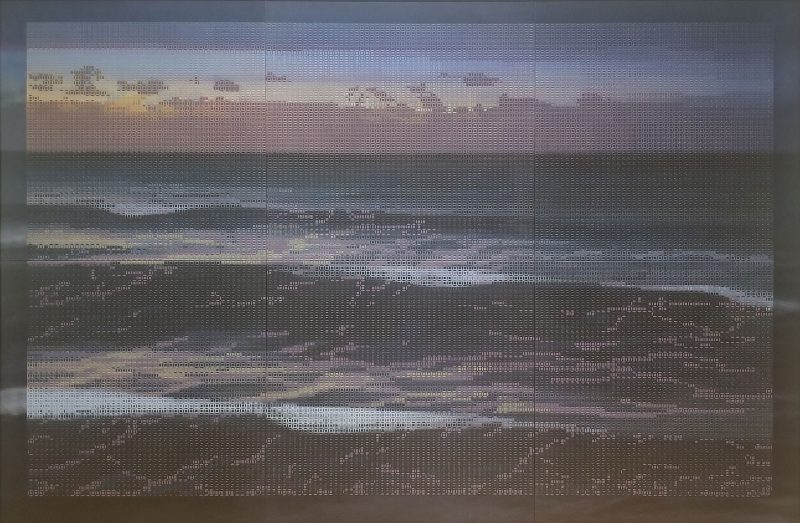
In his solo exhibition at Arthur Ross Gallery, Toledo does what artists can do best — conflate the experience of seeing an art piece with the conceptual understanding of its subject matter — and creates a contemporary portrait of his homeland, Cuba. The first painting in Soy Cuba / I am Cuba is literally unspectacular. The small, untitled work depicts an aerial view of a green landscape smothered in fog; there is no focal point, just broad and wet strokes of gray and blue acrylic. There’s not much for the viewer to see and Roger Toledo knows this.
The rest of the landscape paintings in Soy Cuba / I am Cuba vary vastly from this first work and carry a different message about seeing and knowing. The exhibit features five large scale paintings which all feature Toledo’s signature tile patterning on the canvas. Each image is composed through a combination of paint on the canvas and tiny tiles that are individually painted and adhered to the surface of the painting. Depending on the imagery this patterning becomes more or less apparent in viewing the work; “Al Anochecer (At Dusk)” features little contrast between the colors of the canvas and the tiles to make a smooth visualization of an ocean shore while “Ciénage de Zapata (Zapata Swamp)” utilizes contrast to depict details of a luscious brush.
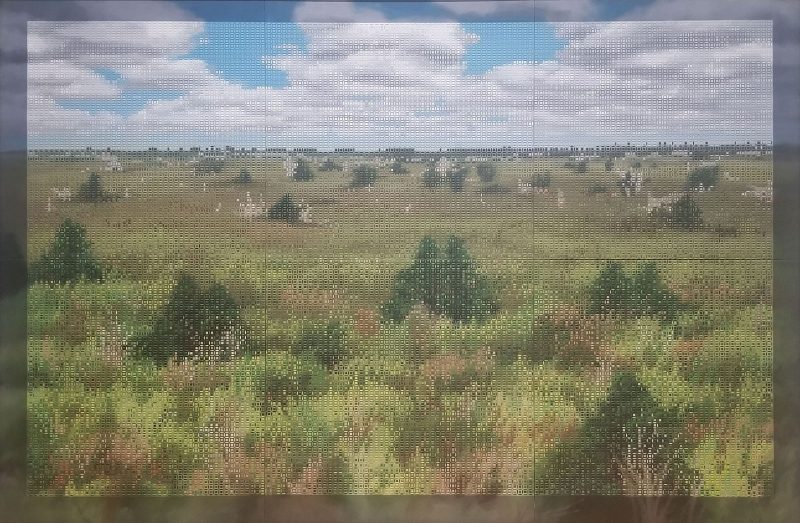
It takes time to see these paintings, in part due to scale and in part due to a masterful use of color theory. As the viewer looks, the illusion of the image will begin to break down and the construction of it will become more apparent. However as with most visual illusions, there is a reconciliation that cannot occur between the understanding of a form and the experience of its result. The result is awe inspiring and is best paired with a meditative gaze. The curatorial statement for the exhibition mentions that “contemporary issues of mobility and stasis” are informing the paintings and briefly makes references to anxieties around socio-economics. The general language matches the Toldeo’s landscapes; one may approach them with a general sense of what is happening but specifics are not as important as the feeling of the content.
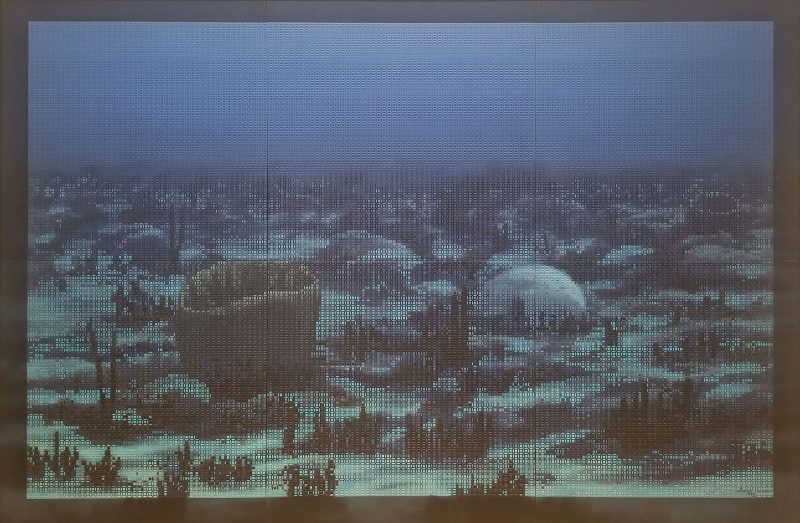
Conceptually that builds a unity within Soy Cuba / I am Cuba but aesthetically there is a bit of wandering from painting to painting. “Hacia el Canto Del Veril (Toward’s Veril’s Edge)” shows us an ocean floor in a limited palette of aquatic blues. Due to the pixelated effect of the tiling as well as the small color range and the lack of apparent sea life, the painting starts to read as a digitalization of an environmental space. It’s easy to imagine “Hacia el Canto Del Veril (Toward’s Veril’s Edge)” as featured set in a point-and-click computer game. All of Toledo’s paintings also features a darkened border which adds to an association with digital screens. However the painting across the room, “Aterrizando (Landing),” is less interested in a photorealistic depiction of its content. It features another aerial view, this time of puffy white clouds and a clear blue sky and focuses more on how the tiles in the sky can create color shifts and abstraction in what would normally be perceived as a rather flat space. Varying shades of blue run in linear patterns across the canvas and resemble something closer to textiles than pixels.
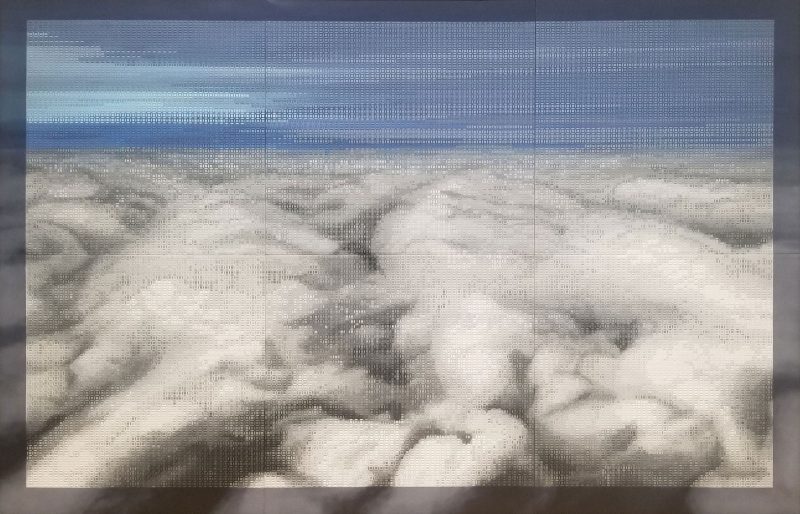
Furthermore within the gallery space are printouts of the photo references for each painting. Each has notes and marks from Toledo as he planned his compositions and a short description describing the circumstances under which he visited each location. The intention likely was to further engage the viewer in Toledo’s studio practice, an aspect of art making that is usually hidden in exhibition spaces. A perhaps unintended consequence is how easy it is to look at each photo and judge how well each photo corresponds to its painting in likeness; the paintings begin to correspond more to their source than to each other. Additionally, a viewer may toggle between favoring a painting or the photograph of certain locations. While I completely loved seeing the painting “Amanecer en el Pico Turquino,” I was even more struck by the photograph. The photo was taken at the top of Turquino Peak which is the highest point in Cuba and shows a glorious view of a mountain range in the early morning, an experience felt more viscerally in photo documentation than painterly expression. Certainly photographs and paintings will always have different aesthetic results, but I did not sense that curating the two together achieved anything more than allowing the viewer to feel a little closer to the artist’s thoughts.
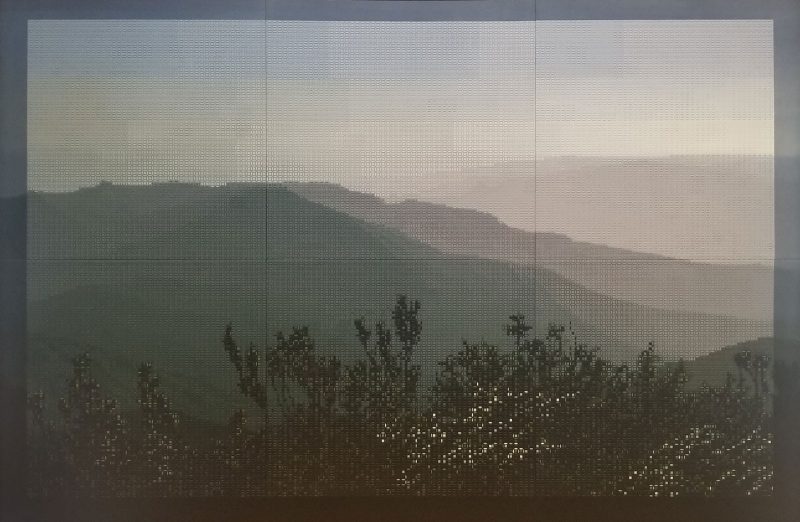
Soy Cuba / I am Cuba came about through a curatorial project developed by Penn students who worked with Professor Gwendolyn DuBois Shaw and Associate Director and Associate Curator of the Arthur Ross Gallery, Heather Moqtaderi. The show holds a lot of intentionality around providing an experience that is easily digestible, in both the description of the work and the paintings themselves. That is difficult to do when the subject matter is about a country that many people who enter the gallery space will know very little about other than reputation and misinformation. A viewer can expect to be drawn in by the collection of paintings Toledo has provided but may wish to further dive into the website made for the exhibition, which features essays and writings around the curation of the show, if a deeper understanding of the socio-political aspects of the work is desired.
Soy Cuba/I am Cuba: The Contemporary Landscapes of Roger Toledo, through June 2, 2019. Arthur Ross Gallery, 220 South 34th Street. Hours this weekend: Saturday & Sunday 12-5pm
